It’s designed to protect equipment from damage by stresses that exceed the design of the part or the piece of equipment. Slip clutch design varies, and different types of slip clutches can be found on one machine. As long as all is working properly, a slip clutch is largely forgotten. But once the slip clutch does slip, everything comes to a halt.
The first reaction of many equipment operators is to get the wrenches out and tighten the clutch. Don’t do it! All pieces of equipment have a weakest link. The slip clutch is designed to be that weakest link. Over-tightening the slip clutch just moves the forces to the next weakest link, which is no longer protected by the slip clutch.
Let’s review the different slip clutches, how to adjust the clutches and the proper care of the slip clutch.
Types of slip clutches
Plate-type clutch

Plate clutches contain two or more flat discs made out of fiber or metal. How tension is applied to the plate-type clutch varies. The most common setup to apply tension to a plate-type slip clutch uses coil springs.

Varying the length, wire diameter and strength, and number of springs provides a base for adjustment of the pressure applied to the slip clutch plates.
Plate-type clutches also use Belleville washers. A Belleville washer is a cupped disc made like a saucer. Belleville washers can be installed two ways: The washers can either be installed with the concave side of the washers against the slip clutch pressure plate or with the convex side against the pressure plate.
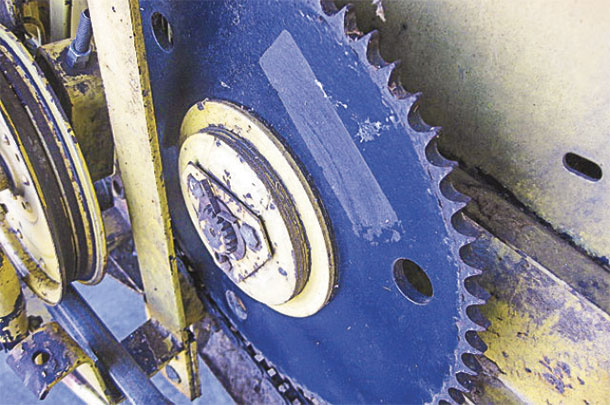
When the concave side is against the pressure plate, there will be one or more stacked, all facing the same way. In this photo, the Belleville washers are tensioned by three bolts through the Belleville washers and screwed into the center plate that has shoulders to support the clutch discs.
Another way to tension the Belleville washer is to use a large nut with a shoulder the washers set on. As the nut is tightened against the inner hub of the slip clutch assembly, pressure is applied to the clutch discs.
Plate-type clutches that use the convex side of the Belleville washer generally only have one Belleville washer.

These Belleville washers are of a larger diameter. Tension is applied to the slip clutch pressure plate by bolts through the outer diameter of the slip clutch assembly and through the Belleville washer.

Some Waltersheid plate-type slip clutches are adjusted by installing a retaining ring in different slots in the clutch hub.
This shows another type of slip clutch disc. This disc is splined to the center hub of the slip clutch. With this style disc, the disc must rotate against the plates on each side.

Without the splines, the disc may rotate against only one of the side plates.
This disc is a metal disc. The advantage to this disc is: This type does not wear out easily.
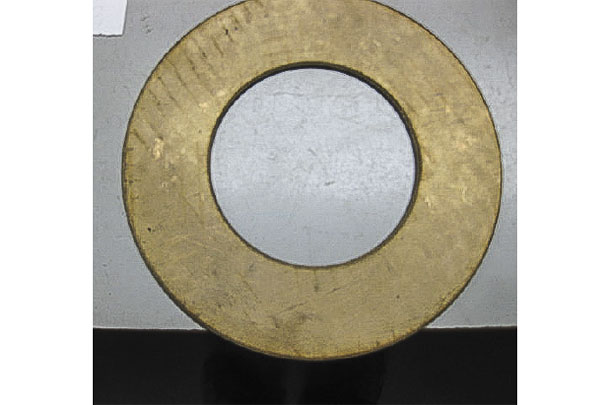
If the disc becomes oil-soaked, the disc can be cleaned since the oil does not penetrate into the metal.
This is the common fiber disc. The advantage to this disc is the price.

Fiber discs are less expensive than other types. The disadvantage is: They wear out quickly and become brittle when slipped excessively.
Jaw-type clutch
Jaw clutches are two mating metal plates with hills and valleys. The high part of one clutch plate mates with the low side of the other clutch plate. Tension can be applied by a single-coil spring or by a series of Belleville washers.
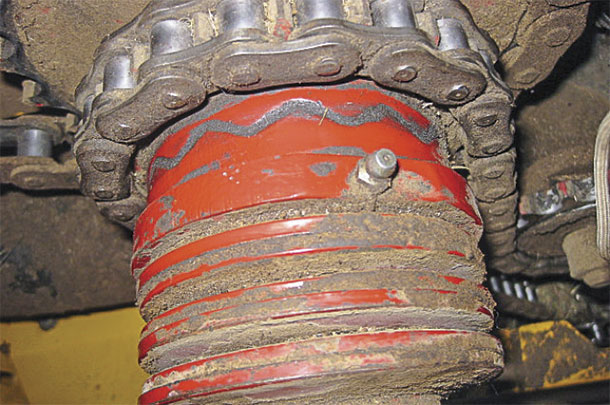
Either tension method uses a nut or bolt to apply tension to the jaw clutch. The difference in the use of Belleville washers between jaw clutches and plate clutches is in the way the Belleville washers are stacked.
On plate clutches, the Belleville washers are stacked with the convex side of the washer to the concave side of the next washer.
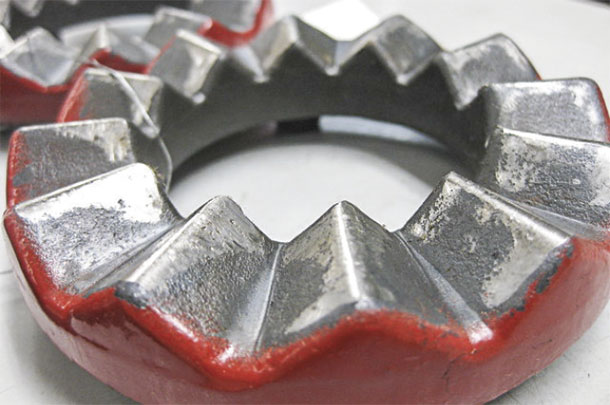
On jaw clutches, the convex side of one Belleville washer is stacked against the convex side of the next Belleville washer and makes one set. This type of clutch has several sets of stacked Belleville washers stacked like this: ( )( )( ).
Cut-out clutch
A cut-out clutch is similar in function to a radial pin clutch. The number of pins and springs is greatly reduced, and the center hub is made differently. The pins and springs are larger.
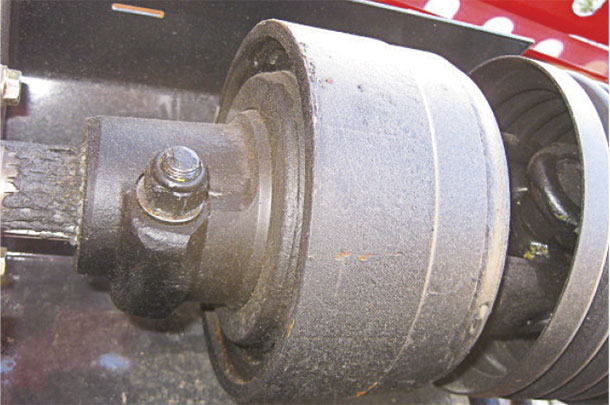
Unlike a radial pin clutch, a cut-out clutch cannot be placed on a through shaft since the center hub is not hollow.
Belt drives
While not a true slip clutch, a belt drive can effectively protect a component of the equipment. There are several methods to adjusting belt drives. One method is to measure the pressure required to deflect the belt a certain distance. Another common method is a spring, which is stretched to a certain length. On the older New Holland square balers, the pickup belt tension was adjusted to a point, which took a certain amount of pressure to move the belt idler.
Radial pin clutch
Radial pin clutches are exactly what the name implies. The clutch is made up of a ribbed housing. In this housing is a center hub with holes drilled around the outer diameter of the hub. The number of holes around the circumference can vary, and the number of rows can also vary.
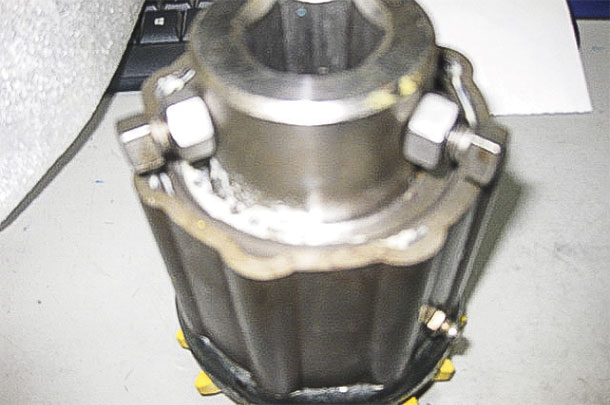
In these holes, springs are placed along with hollow tapered pins. The tapered angle of the pins matches the ribs of the housing.
The torque that the clutch will transfer is dependent on the number of pins and springs. Generally, you will find one spring per pin, but a second smaller spring, which fits the inner diameter of the larger spring, can also be found.
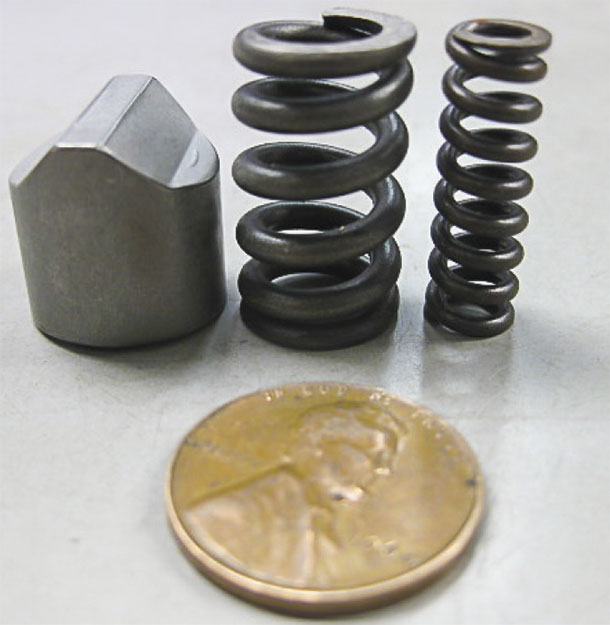
Along with being used on the end of a PTO shaft, a radial pin clutch (as shown in the photo) can have a hollow center hub and can be placed anywhere on a through shaft.
Belt drives
While not a true slip clutch, a belt drive can effectively protect a component of the equipment. There are several methods to adjusting belt drives. One method is to measure the pressure required to deflect the belt a certain distance.
Another common method is a spring, which is stretched to a certain length. On the older New Holland square balers, the pickup belt tension was adjusted to a point, which took a certain amount of pressure to move the belt idler.
Adjusting slip clutches
Slip clutches are adjusted to transfer a certain amount of force to the machine. A common setting for the PTO slip clutch on an older square baler was 2,400 inch-pounds.
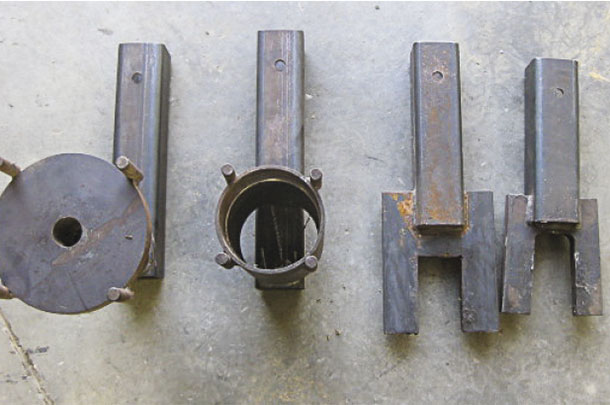
That translates into a 100-pound force being applied to a bar 24 inches from the center of the shaft (24 inches x 100 pounds = 2,400 inch-pounds). Some clutch settings are in inch-pounds while others are in foot-pounds. In the above example, it would be 200 foot-pounds.
The tools needed to measure the slip point include a tool to hook over a yoke or sprocket and a spring scales. You do not need to make anything elaborate. In the left photo is a tool I made back in the ’70s.
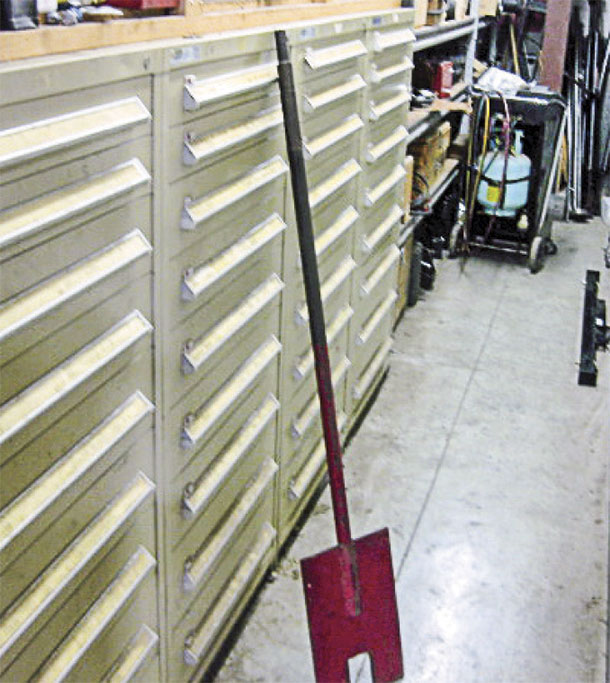
It is a piece of flat plate and a used shaft. In the right photo are some of the specialty adapters to check various slip clutches. A length of tubing fits into the adapters to complete the setup.
When checking PTO slip clutches, on some equipment there is not enough room for the tools. I made an adapter which attaches to an adapter plate we have for a skid loader. I can take the PTO shaft off the machine and attach it to the skid loader plate.
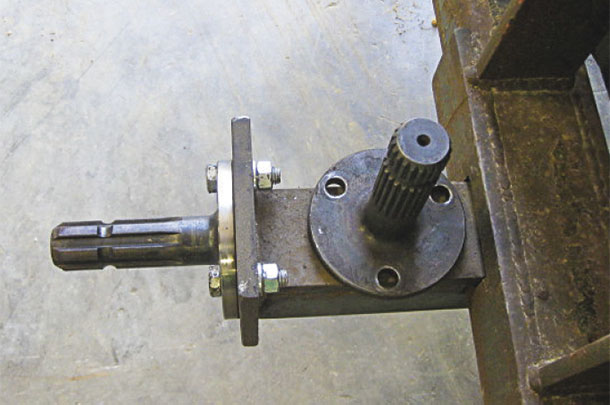
This makes checking and adjusting the slip clutches easier. Most shafts have either a 540 spline or a 1,000 spline. I change the PTO adapter to fit the shaft.
When applying pressure to the spring scales, the spring scales must be at a right angle to the long bar during the pull. The clutch spec for this slip clutch was 590 foot-pounds.
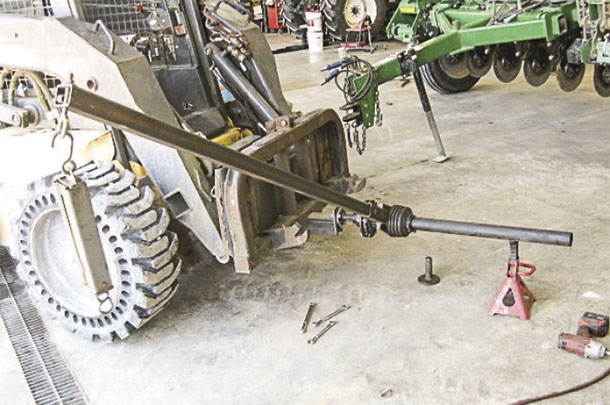
From the center of the PTO shaft to the spring scales attachment eye bolt, it measured 6.75 feet. The 87 pounds pull on the spring scale was achieved by tightening the bolts through the clutch and Belleville washer.
If you do not have a spring scale, you can use your weight to check the slip clutch setting. This method will get you close to the proper slip clutch setting.
The slip clutch specification denoted in inch-pounds divided by your weight will equal the distance from the center of the shaft and where your weight is applied. For example:
Clutch specification = 6,000 inch-pounds
Your weight = 180 pounds
6,000 inch-pounds /180 pounds = 33.3 inches
With the bar in place, measure 33.3 inches from the center of the shaft and apply your weight at that point. If the clutch is slipping too easily, adjust the clutch gradually until the clutch will maintain your weight. If the clutch is not slipping when you apply your weight to the bar, loosen the clutch gradually until the clutch begins to slip.
Adjusting a plate-type slip clutch is done by tightening springs or Belleville washers. In the case of the Waltersheid slip clutch, a ring is installed in slots. The advantage to a plate-type clutch, except the Waltersheid, is you can easily adjust the slip clutch to the specs.
Most operator’s manuals give a spring length for coil springs, which will get you close to the proper setting. With the single large Belleville washer plate-type slip clutches, there may be several options. One is to measure the gap between the back plate of the slip clutch and the large Belleville washer.
Other times, there will be an outer ring around the slip clutch and you tighten the Belleville washer until the Belleville washer is tight against the outer ring. Plate clutches which use the small Belleville washers can only be properly set by using the special tools.
These setting are a starting point. The only way to know what the slip point is for a slip clutch is to use the tools shown above.
Adjusting jaw-type clutches that use a coil spring for tension will have a spring length listed in the operator’s manual. Jaw clutches which use the small Belleville washers will require the special tools to set the slip clutch properly.
Radial pin clutches require the special tools to check the slip point. Disassembly is required to repair, and there is no easy way to know what the clutch is set at if you add the small springs.
Cut-out clutches are not adjustable.
Belt drives are adjusted by a draw bolt and spring.
Proper slip clutch care
Plate-type slip clutches require routine service to maintain their effectiveness. Most manufacturers recommend loosening the slip clutch, freeing the stuck plates and using the tractor to slip the clutch for several seconds before the year’s first use. Some operator’s manuals give a particular burnishing procedure.
The following is the burnishing procedure for a round baler: At the beginning of the season or after the baler has sat idle for a considerable length of time, the clutch should be burnished.
- Mark the bolt heads.
- Loosen the bolts three-and-a-half turns.
- Engage the tractor PTO at low rpm for five seconds.
- Let the clutch cool for two minutes.
- Engage the PTO for another five seconds.
- Let the clutch cool for two minutes.
- Tighten the bolts to the original setting.
Jaw clutches do not require any routine maintenance except for greasing the hub bushings.
Radial pin clutches do not require any routine maintenance except for greasing. Too much grease can cause a hydraulic lockup, and the clutch will not slip.
Cut-out clutches do not require any routine maintenance.
Belt drives only require the belt tension to be checked. ![]()
Mike Seckinger has over 44 years of experience as a farm equipment mechanic in southern Indiana and says, “What I write is not intended to represent the only way to solve a problem, and it may not always be complete. If you choose to follow some of my procedures, remember to always practice safety first. Wear the correct clothing and safety equipment and use the equipment’s safety devices.”









